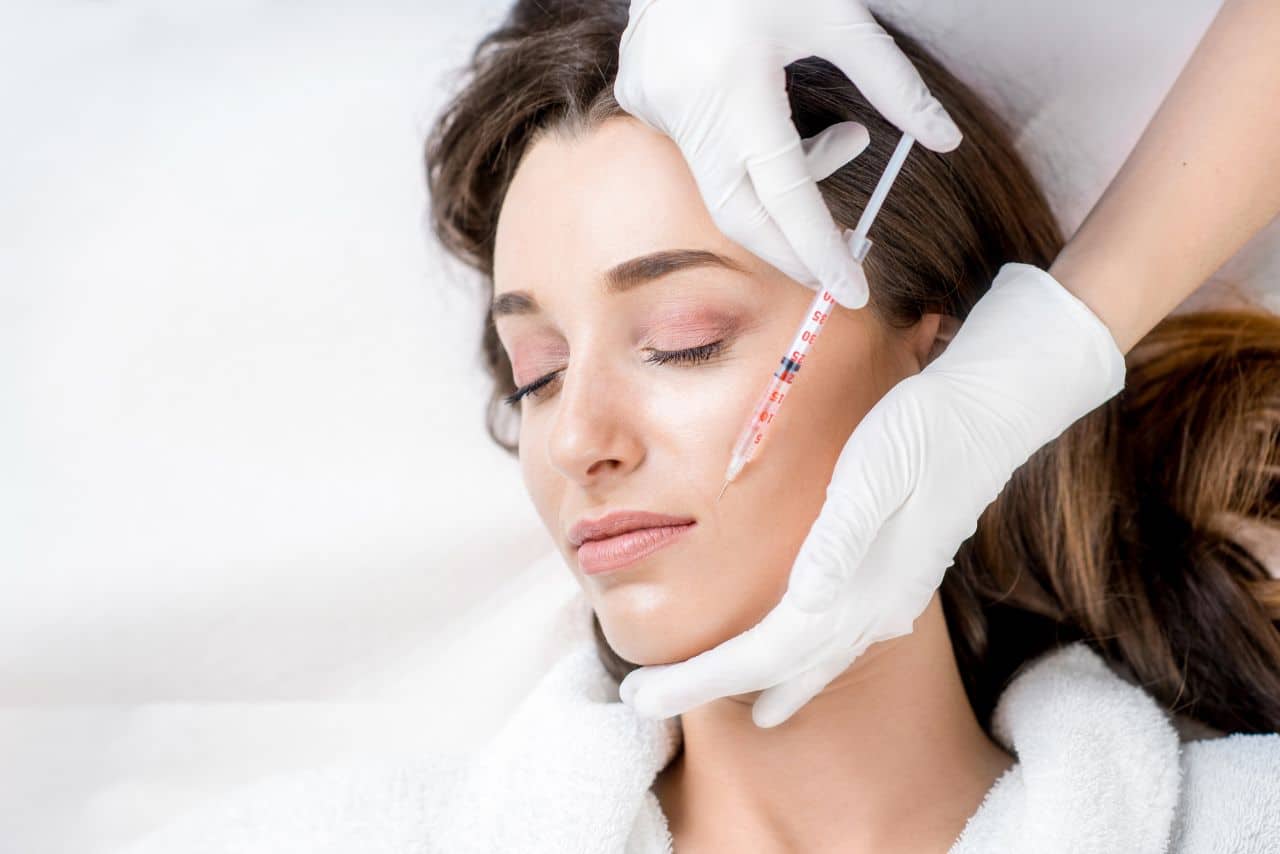
Both Radiesse and Restylane are dermal fillers commonly used as anti-aging treatments. Radiesse is manufactured by Merz Aesthetics while Restylane is a product of the Uppsala-based Q-Med AB. Although developed by different companies, the two fillers have similar indications. Both are highly effective in treating wrinkles, lines, and folds. This includes nasolabial folds (which are the smile lines extending from the sides of the mouth all the way up to the nose) and lined regions around the mouth. Radiesse and Restylane (in particular, Restylane Lyft) have also been approved by FDA for the correction of aging-related volume loss in the backs of the hands. At the same time, both Restylane and Radiesse help to augment the cheeks by adding volume to sunken areas. They can also be used in lip augmentation for a more defined appearance.
Formulated with different active ingredients, the ways Radiesse and Restylane work are fundamentally different. Radiesse injection contains synthetic calcium hydroxylapatite (CaHA) microspheres suspended in an aqueous gel (which functions as a carrier). The filler acts to reduce the look of lines and wrinkles while exerting a volumizing effect on facial areas that lack volume. More importantly, the microspheres are able to stimulate the regeneration of collagen in the body, thereby healing the skin naturally. CaHA microspheres in Radiesse are fully biodegradable, which means they will be metabolized and leave only the natural collagen behind.
On the other hand, Restylane is formulated with non-animal stabilized hyaluronic acid (NASHA) as the active ingredient. Hyaluronic acid is a naturally occurring mucopolysaccharide that has water retention properties. It is commonly found in the tendons, cartilage, joints, ligaments, and skin. Hyaluronic acid will swell up when it comes in contact with water, thereby smoothing wrinkles and lines. NASHA is produced synthetically from streptococci bacteria through the process of fermentation. Therefore, it is unlikely to trigger any immunogenic reactions. By mimicking the actions of natural hyaluronic acid, NASHA will eventually be degraded and absorbed by the body.
Safety of Radiesse and Restylane
Both fillers have undergone extensive safety testing and are clinically proven safe. Most patients do not experience major side effects after using Restylane and Radiesse. Having said that, the dermal fillers may occasionally cause minor injection-related reactions such as swelling, tenderness, pain, discoloration, redness (erythema), and itching. These side effects are self-limiting and will eventually resolve themselves.
Both Radiesse and Restylane are administered through minimally invasive injections (which involve minimal pain and discomfort). As a general rule, both types of fillers should only be injected by licensed medical professionals. Radiesse and Restylane are not intended for self-administration. Patients are strongly advised against injecting themselves, as this could cause serious complications which are irreversible (e.g. injections into a blood vessel).
Radiesse vs Restylane: which is the better filler?
According to a study published recently in the Journal of Dermatologic Surgery, more patients prefer Radiesse over Restylane. This comes as no surprise, considering the fact that Radiesse produces similar results to Restylane with less of the filler. While having the same side effect profile, Radiesse seems to last longer and require fewer repeat injections to maintain the results. Radiesse can usually last from 9 to 18 months in most patients, depending on a number of factors. In contrast, Restylane only has an average duration of action of about 6 months (keep in mind that individual results may vary from patient to patient). That being said, some patients notice the results of Restylane for up to 12 months. The superior longevity of Radiesse can be attributed to its unique active ingredients that have collagen-regenerating properties. Overall, Radiesse is found to deliver higher patient satisfaction.
Despite the findings, there are different applications for Restylane and Radiesse in practice. The two fillers share a lot of the same indications and treatment sites; however, Restylane works best for certain aesthetic concerns. On the other hand, Radiesse is more suitable for flat cheek enhancement. Plus, when working on the areas around the eyes, Radiesse would be a better choice.
Which filler should I use?
When choosing the most appropriate treatment, doctors should consider factors such as the skin condition, the age of the patient, and perhaps more importantly, the treatment area. Therefore, it is important to conduct a thorough consultation with patients in order to determine the right filler.
Summary
Regardless of the type of filler, a foundation of healthy skin is vital to the success of the treatment. Therefore, skincare should start as early as possible. Fillers such as Restylane and Radiesse often act as a supplement to the skincare, helping to reverse the effects of aggravation, gravity, and aging on the skin.
If patients have a solid history of preventative skincare, fillers will work better and possibly delay the need for invasive surgeries. Discuss your concerns with your injector to help them determine the best treatment for you.

About the Author: Doris Dickson is a specialist writer for Health Supplies Plus, focusing on the aesthetic medicine industry. She diligently researches cosmetic treatments and products to provide clear, concise information relevant to licensed medical professionals. Her work supports Health Supplies Plus’s commitment to being a reliable informational resource and trusted supplier for the aesthetic community.
Disclaimer: The content provided in this article is intended for informational purposes only and is directed towards licensed medical professionals. It is not intended to be a substitute for professional medical advice, diagnosis, or treatment, nor does it constitute an endorsement of any specific product or technique. Practitioners must rely on their own professional judgment, clinical experience, and knowledge of patient needs, and should always consult the full product prescribing information and relevant clinical guidelines before use. Health Supplies Plus does not provide medical advice.
